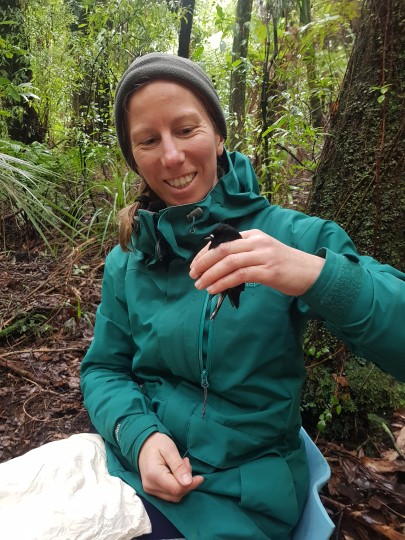Do native birds have enough to eat in mountain forests?

Dr Anne Schlesselmann with a kakaruia / black robin, Petrioca traversi.
Image: Archie Macfarlane
Dr Anne Schlesselmann and her Manaaki Whenua colleagues recently undertook the first study to look for an elevational gradient in reproductive success for AoNZ birds, as part of the MBIE Endeavour research programme ‘More Birds in the Bush’.
Being able to determine the factors that limit populations in this way is fundamental for effective conservation management of AoNZ’s threatened bird species. If places with optimal conditions can be identified, these can be targeted for predator control and lead to faster recovery of dwindling bird populations.
In spring and summer 2020/21, working at six sites at each of three different elevations on the sides of Pirongia Mountain, the researchers sampled invertebrate prey while simultaneously monitoring the fate of 55 tītitipounamu/rifleman (Acanthisitta chloris) nests and 33 miromiro/tomtit (Petroica macrocephala) nests, and the number of fledglings produced by each. Camera traps and tracking tunnels were used to monitor predator numbers.
Mammal predators are routinely suppressed on Pirongia Mountain. Rats and possums do not only eat birds, but also the same food as native birds. Hence, only when rats and possums are at low numbers is it possible to investigate whether there are environments that are intrinsically more productive for birds, such as low-elevation forests.
The results from the 18 sites somewhat supported the theory that there would be less invertebrate food available for the birds at higher elevations and that their reproductive success would be lower as a result. In general, though, nest survival and number of fledglings produced by tītitipounamu and miromiro were not strongly related to elevation or food availability. Understanding differences in survival will be the next step to better understand food limitations.

